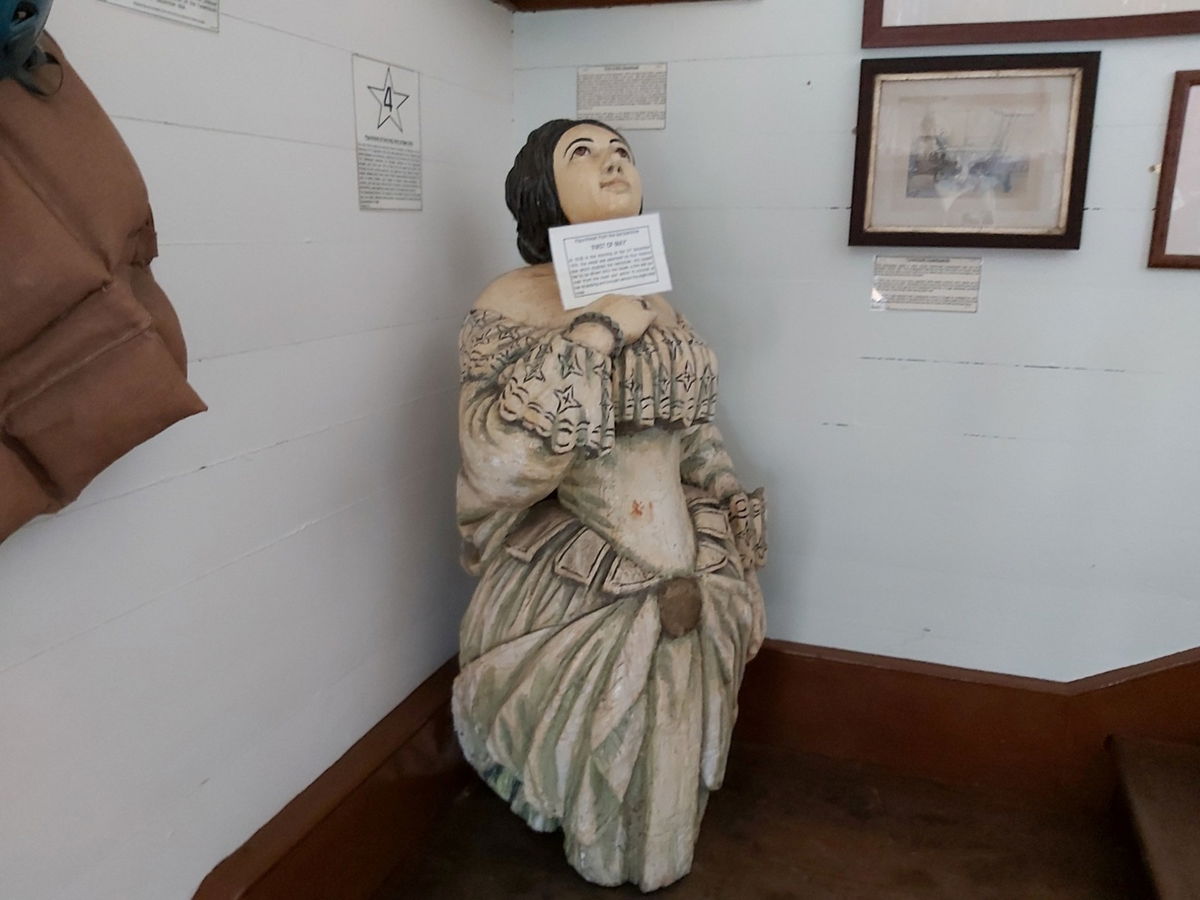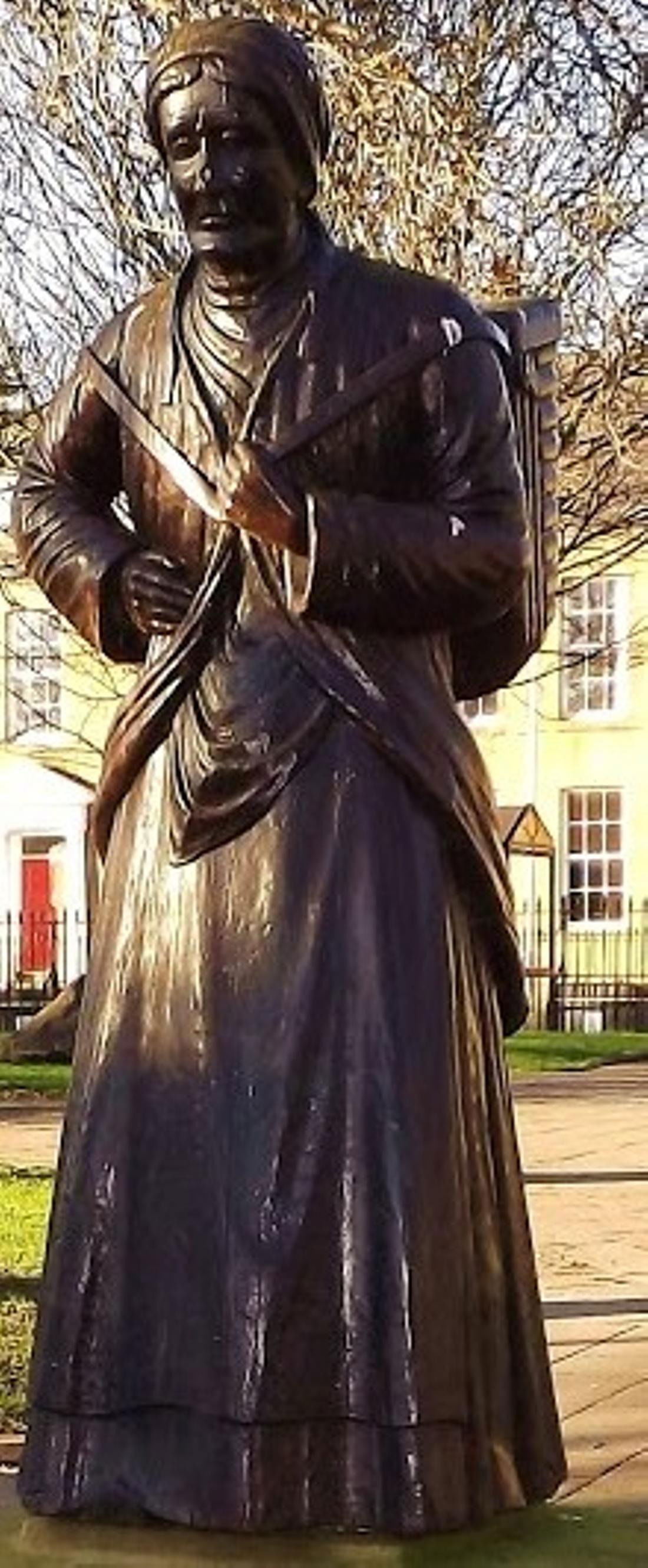Wooden Dollies of North Shields
The Wooden Dollies are fairly well known to most visitors to North Shields but not so many people know their history.
To trace the origin of the tradition we need to travel back in time to a christening on the 11th February 1756 of David Bartleman the son of Alexander Bartleman and his wife Margaret nee Murray, David was one of four children of the couple. It is worth mentioning that David's older brother Alexander had a son in 1803 also called Alexander who, in 1851 became the second mayor of Tynemouth.
In addition, both Alexanders ran Northumberland Brewery which was merge and become Bartleman and Creighton Brewery. This was around the time that David's sister Anne married Alexander Crighton.

Returning however to Alexander and Margaret Bartleman, Alexander senior assisted by his wife Margaret was both a brewer and a shipbuilder and one ship built was a coal brig called appropriately “The Alexander And Margaret”.
Like many ships of the era the ship had a figurehead, this was in the form of a woman and was supposed to denote good luck. The figure has been described as: no slim, simpering, Goddess-looking creature, but a bluff, saucy, hearty-looking hussy, with a full flaunting petticoat something in the style of good Queen Bess.

Here is another example of a figurehead from the First Of May which was Wrecked at Prior's Haven (near the mouth of the Tyne) in December 1876. The crew were saved by the Tynemouth Volunteer Life Brigade and this dolly is now housed at the Volunteer Life Brigade Watch House in Tynemouth..
Anyway, back to the story. The Alexander And Margaret ship was captained by the above-mentioned son David and was sailing of the Norfolk Coast in January1781. Also, at sea was a notorious pirate and privateer who went by various first names William, Daniel and John, his surname however was Fall or Fell.
At this time the American War of Independence was ongoing and it should be remembered that France had aligned themselves with the Americans in this war. Fall held a Letter of Marque from America and this document authorized the captain to capture enemy ships, their crews, and their cargoes. Falls practice was to demand a ransom from the Captain and, once paid, he would allow the ship to travel freely. The Alexander and Margaret had a crew of ten men and boys, it carried only light armaments amounting to one small cannon.
On the 31st January Bartleman's ship came under attack off the Norfolk coast from Falls Cutter Fearnought, the cutter carried a huge crew and was armed with 18 cannons. Miraculously the much smaller coal brig managed to fight off the attack and make its escape.
Two hours later however Falls privateer again launched an attack, this attack was far more ferocious and Daniel McAuley, the mate, was badly injured and died from loss of blood. Daniel too was seriously injured and obliged to yield to Captain Fall, the ransom was 400 guineas, which, in modern terms equates to about £72,000.
Having paid the ransom, the ship limped into Great Yarmouth but David died of his wounds just two weeks later on 14th February aged just 25.
Alexander had a memorial erected over his son's grave which gave details of the attack leading to his son's death.

With kind permission of Charles Sale Gravestone Photographic Research..
The memorial recounted that Alexander Bartleman had ordered the erection of the stone over his son's grave to record the gallantry of his son and the bravery of his faithful mate and also to mark the infamy of a savage pirate.
It states that on the 31st of January 1781 off the Norfolk coast and armed with only one three pounder cannon and ten men and boys David had nobly defended himself against a cutter carrying eighteen four pounder cannons and upwards of a hundred men commanded by the notorious pirate Fall and fairly beat him off.
The inscription continues that two hours after the enemy came down upon him again when totally disabled, his mate Daniel Macauley expiring with loss of blood and himself dangerously wounded he was obliged to strike and ransom. He then brought his shattered vessel into Yarmouth with more than the honour of a conqueror and died here in consequence of his wounds on the fourteenth of February following in the twenty fifth year of his age.
Two hundred and thirty years after his death a family called Pearce, who believed that their ancestors had been pirates, paid for the restoration and repositioning of the gravestone in St Nicholas Churchyard, Great Yarmouth.
Meanwhile Alexander had recovered the wooden dolly from the ship and had it transported back to his home at 23 Front Street, Tynemouth where he stood it in the front garden. The property no longer has a front garden and the building is now home to The Wine Chambers.
In 1814 the dolly was moved to a position on the Custom House Quay, Low Street, North Shields. This was the first of what has been to date seven wooden dollies. It was situated in one of the busiest places at the time in North Shields. All of the adjacent buildings were involved in trade of one form or another, there were at least fifty public houses, dance houses, coffee houses, chandlers and ropemakers in the vicinity. The dolly was used to haul spars and wood from the quay using rope wrapped around her.
Seamen took to cutting chunks off her as good luck charms on their subsequent voyages. This custom led to local urchins also hacking away at her and eventually a group of drunks pulled her out of the ground and cut off her head. This was in 1850.
This of course was a year before David's nephew became mayor and one has to assume that he already carried some influence. What is certain is that a new dolly was quickly constructed to replace the first, built by a sailmaker called Hare. She had a shorter life than her sister and just 14 years later she too was replaced on the 22nd June 1864, the day before the laying of the foundation stone for the new Low Lights Dock.
This Dolly had previously been attached to the barque Expert.
A barque, barc, or bark is a type of sailing vessel with three or more masts having the fore and mainmasts rigged square and only the mizzen (the aft-most mast) rigged fore and aft. She too was attacked and chipped away.
Her nose was totally hacked off and replaced with an iron one by local blacksmith Robert Pow. Sailors then began drilling holes in coins and nailing the coins to the dolly. This dolly was replaced in 1901, however that was not the end of her.
In the 1930's she appeared in an antique shop in Newcastle after the owner a Mr Seery had bought her from a fisherman's widow. She was subsequently bought by a Dane and it is believed that she now resides in a Denmark Museum.
The fourth Wooden Dolly from 1902 was carved by May Spence of North Shields, this dolly did not resemble the previous effigies but was more in line with the typical image of a Cullercoats fishwife with shawl and creel on her back.
The unveiling of this dolly included a procession with band and speeches. Inevitably she too was vandalised for souvenirs and good luck charms, her right elbow found its way to an hotel in Melbourne, Australia and the rest of her remains were found in a Whitby Breakers Yard. She was removed in 1957.
In 1958 the fifth wooden dolly was created by Robert Thompson Ltd in Kilburn; North Yorkshire and it had incorporated into the figure two mice as was the tradition with that company. Mahogany was used to create this figure.
This particular figure still stands but unlike her sisters she graces Northumberland Square in North Shields. She was treated to some refurbishment work in early 2020.

The other end of North Shields however was not to be denied its dolly and an additional one was erected beside the Prince of Wales Pub formerly called The Wooden Dolly on the original Custom House Quay site. This is still there and is a larger copy of the 3rd dolly.

The most recent dolly is in fact only half a dolly as her body is only from the waist up. It was installed in 1993 at the Wooden Doll pub formerly The King's Head and now called How Do You Do overlooking the Fish Quay, although referred to as a wooden dolly it is in fact made of clay and cast in plaster.
So, a pirate in the 18th century is responsible for seven different wooden dollies three of which still exist!
Thanks to our Fabulous North friend David Scholey for this amazing historical information. This is actually an extract from David's book called Secret North Shields & Tynemouth and if you want to read more it is available in all good bookshops or buy online from Amazon.
